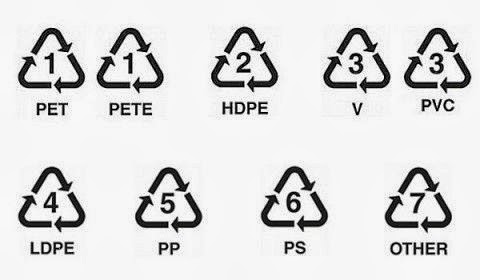Papers free open access: sovereign risk, global risk and geopolitical risk
1. Does sovereign risk in local and foreign currency differ?
Marlene Amstad, Frank Packer and Jimmy Shek.
BIS Working Papers No 709, March 2018.
Abstract
Historically, sovereign debt in local currency has been considered safer than debt in foreign currency. Yet the literature offers scant theoretical or empirical guidance as to why such a gap exists, or why it appears to have slowly and steadily diminished for all regions over the past two decades, as expressed in the ratings widely used by global investors and regulators to assess credit risk. We suggest and empirically test five hypotheses. We find that differences in inflation do not explain the assessed gaps between local and foreign currency credit risk. The banking sector's vulnerability to sovereign debt problems is a significant determinant of the spread, but does not account for its decline over time. Instead, the surge in global reserves, and to lesser extent the reduced reliance on overseas foreign currency borrowing (ie the decline of original sin), as well as lower global volatility, appear to have lessened the gap. But if these variables were to go into reverse, the gap could again widen.
Keywords: sovereign risk, local currency debt, foreign currency debt, credit ratings.
2. The Costs of (sub)Sovereign Default Risk: Evidence from Puerto Rico.
Anusha Chari, Toan Phan and Ryan Leary.
Working Paper No. 18-03, February 17, 2018.
Abstract
Puerto Rico’s unique characteristics as a U.S. territory allow us to examine the channels through which (sub)sovereign default risk can have real effects on the macroeconomy. Post-2012, during the period of increased default probabilities, the cointegrating relationship between real activity in Puerto Rico and the U.S. mainland breaks down and Puerto Rico spirals into a significant decline. We exploit the cross-industry variation in default risk exposure to identify the impact of changes in default risk on employment. The evidence suggests that there are significantly higher employment growth declines in government demand and external finance dependent industries. An additional real effect of default anticipation is that heightened default risk Granger causes Puerto Rico’s austerity measures. An event study analysis using government bond yields and stock returns confirms that news of increased default risk increases the cost of capital for the Puerto Rican government and for publicly traded Puerto Rican firms.
Keywords: Sovereign debt, default risk, growth, employment, cost of capital, external
finance dependence, government demand.
3. The dollar exchange rate as a global risk factor: evidence from investment.
Stefan Avdjiev, Valentina Bruno, Catherine Koch and Hyun Song Shin.
BIS Working Papers No 695, January 2018.
Abstract
Exchange rate fluctuations influence economic activity not only via the standard trade channel, but also through a financial channel, which operates through the impact of exchange rate fluctuations on borrowers' balance sheets and lenders' risk-taking capacity. This paper explores the "triangular" relationship between (i) the strength of the US dollar, (ii) cross-border bank flows and (iii) real investment. We conduct two sets of empirical exercises - a macro (country-level) study and a micro (firm-level) study. We find that a stronger dollar is associated with lower growth in dollar-denominated cross-border bank flows and lower real investment in emerging market economies. An important policy implication of our findings is that a stronger dollar has real macroeconomic effects that go in the opposite direction to the standard trade channel.
Keywords: financial channel, exchange rates, cross-border bank lending, real investment.
4. Risks in China’s financial system.
Zheng (Michael) Song and Wei Xiong.
Abstract
Motivated by growing concerns about the risks and instability of China’s financial system, this article reviews several commonly perceived financial risks and discusses their roots in China’s político economic institutions. We emphasize the need to evaluate these risks within China’s unique economic and financial systems, in which the state and non-state sectors coexist and the financial system serves as a key tool of the government to fund its economic policies. Overall, we argue that: (1) financial crisis is unlikely to happen in the near future, and (2) the ultimate risk lies with China’s economic growth, as a vicious circle of distortions in the financial system lowers the efficiency of capital allocation and economic growth and will eventually exacerbate financial risks in the long run.
Keywords: Chinese economy, debt risk, housing risk, policy risk, productivity.
5. Measuring Geopolitical Risk.
Dario Caldara and Matteo Iacoviello.
Abstract
We present a monthly indicator of geopolitical risk based on a tally of newspaper articles covering geopolitical tensions, and examine its evolution and effects since 1985. The geopolitical risk (GPR) index spikes around the Gulf War, after 9/11, during the 2003 Iraq invasion, during the 2014 Russia-Ukraine crisis, and after the Paris terrorist attacks. High geopolitical risk leads to a decline in real activity, lower stock returns, and movements in capital flows away from emerging economies and towards advanced economies. When we decompose the index into threats and acts components, the adverse effects of geopolitical risk are mostly driven by the threat of adverse geopolitical events. Extending our index back to 1900, geopolitical risk rose dramatically during the World War I and World War II, was elevated in the early 1980s, and has drifted upward since the beginning of the 21st century.
Keywords: Geopolitical Risk; Economic Uncertainty; War; Terrorism; Business Cycles.



Comentarios